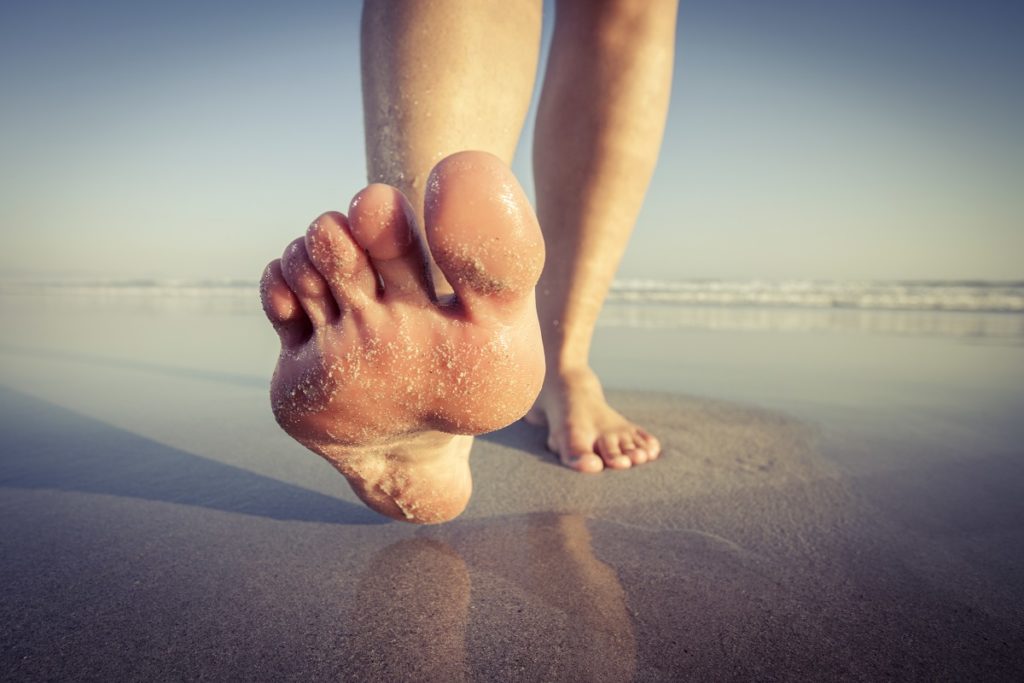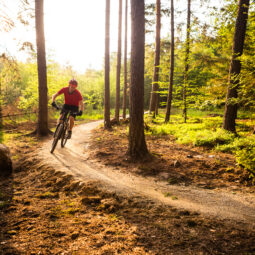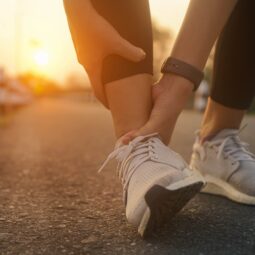By Antonia McClune, DPM, foot and ankle specialist

The tiny joint that connects your big toe to your foot carries a lot of responsibility: it’s the joint that you land on and push off of to propel you forward when you walk. And while it’s built to take a pounding, some feet are built to make the big toe joint more prone to problems, such as bunions and arthritis. Both problems can cause joint prominence (bumps) and pain, but they’re treated very differently, so it’s important to know the difference.
Bunions (no, you didn’t cause it)
A bunion is a prominent big toe joint that forms a bump to the side of the foot, gradually making the big toe crooked. Women who’ve worn heels for years often say to me, “I caused this, didn’t I?” No, you didn’t. The foot type or pathology that you were born with set you up for this eventual problem. Squeezing a wide, prominent toe into a small pointy shoe may cause pain, but it didn’t cause your bunion. Men get them, too — they just don’t seek help as often, probably because the fashion world has been kinder to them and their footwear.
If you think you have a bunion, a visit with a podiatrist is a great idea. We’re here to help you learn about what you have, what you can do to reduce pain, and what your options are if it worsens. Historically, there was a lot of focus on cosmetic treatments, but these days, treatment focuses on improving pain and function. Your options may include:
- Ice and anti-inflammatories
- Improving shoe fit — shoes that rub and irritate the joint cause most bump pain
- Padding and orthotics
- Gel toe spacers to separate the toe and keep it in a more neutral position
- Steroid injections to relieve pain and inflammation
- Surgery — approaches differ depending on the severity of the bunion and individual anatomy, but the goals are the same: to realign the bone that has flared outward, reduce the prominence and straighten the toe to improve comfort
Arthritis (no, it’s not because of your age)
Many people who come to me assuming they have a bunion are surprised to learn that it’s actually osteoarthritis of the big toe joint. The conditions are easily confused, but with arthritis, the bump is almost always at the top of the foot rather than the side. In addition, the first sign of a bunion is often what you see: the bump. With arthritis, it’s more often what you feel: pain around the toe joint, and a reduced ability to move or bend your toe. Activities that bend the toe upward — such as squats, planks, pushups or standing on tiptoes — are bound to cause pain if you’ve lost cartilage due to arthritis.
When I mention arthritis, patients often say, “It’s because of my age, isn’t it?” Again, no, it’s not. I’ve seen this in 20 year olds and 90 year olds, and at all activity levels. Some foot types simply put more demand on the big toe joint, which can cause cartilage damage over time. Pain-relief options include:
- Shoes and inserts that help stabilize or splint the joint to reduce movement
- Custom orthotics for more aggressive joint stabilization
- Avoiding activities that cause pain (including stretching, which aggravates it)
- Steroid injections — though not a cure, these do help reduce arthritis pain
- Cheilectomy — this surgical procedure removes bone spurs, cleans up the joint, and provides long-term symptom relief, with a very quick recovery
- Fusion — for severe arthritis, surgically fusing the toe joint into one solid piece is often the best option, preventing movement and putting an end to pain
Should you see a podiatrist?
A painful big toe can throw your whole summer out of joint. The sooner you seek information and treatment, the better. Podiatrists share your goals: we don’t want to curtail your activity or to rush you into surgery. We’re here to help you learn about what you have and how to make it better so you can stay on your toes and do what you want for as long as possible.


